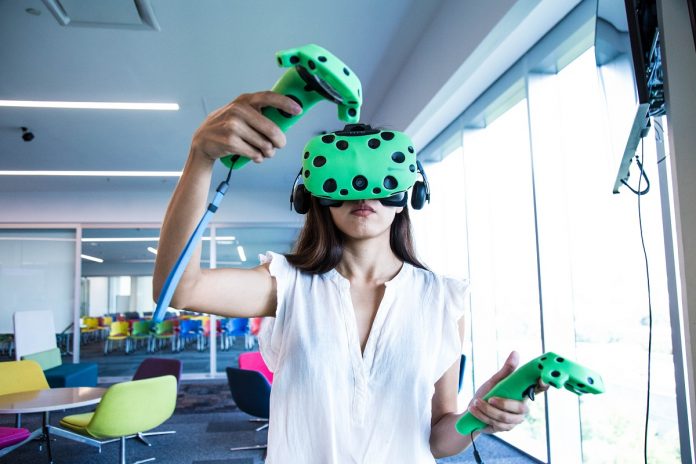Tecnológico de Monterrey inaugurated the VR Zone, a space that uses Virtual Reality (VR) to allow students to experience immersive learning in different disciplines.
“Immersive learning seeks to provide students with complete teaching experiences, where the student feels immersed in an environment. VR technology allows us to simulate educational experiences in complex environments. For example, to study a corpse or a human body,” explained Joaquín Guerra, Academic and Innovation Vice-Chancellor at Tec de Monterrey, in an interview with Tec Review.
This semester, the VR Zone will open on seven campuses in the cities of Monterrey, Mexico City, Santa Fe, State of Mexico, Guadalajara, Puebla, and Querétaro. The project aims to scale and expand the number of these spaces on more campuses.
Immersive learning seeks to provide students with complete teaching experiences, where the student feels that she is immersed in the environment. VR technology allows us to simulate educational experiences in complex environments.
Each VR Zone has virtual reality stations, equipped with hardware such as controls, viewers and software to carry out students’ learning experience. Students will have access to 47 virtual reality applications from various disciplines.
“We were given the task of identifying what kind of VR applications and programs existed on a commercial level, and what kind of applications we had to develop or adapt to fulfill our objectives,” said Guerra.
For this initiative, more than 300 teachers were trained to familiarize them with the technology, while nearly 500 teachers have already designed interactive dynamics for their courses with the support of the Center for Educational Development and Educational Innovation (CEDDIE).
We want to make sure that we have methodological and scientific validation of the impact of implementing these technologies on student learning.
Joaquín Guerra shared that they are currently working on educational research projects to measure and scientifically assess the impact on learning and teaching experience with these types of technologies.
“For us, it is important not only to innovate and test a technology, which is very valuable, we also want to make sure that we can have scientific validation of the impacts that these technologies have on student learning so that we can make evidence-led decisions.”
These innovative spaces are part of the Tec21 Educational Model, implemented in this school year, which aims at students facing the challenges of the current and future world, using cutting-edge technologies for the benefit of their training. During the Fall 2019 semester, over 20,000 students nationwide are expected to experience the VR Zones.
This article was originally published in Tec Review.
This article from Observatory of the Institute for the Future of Education may be shared under the terms of the license CC BY-NC-SA 4.0 
)
)


)